What Is Ecommerce with Examples | Ecommerce or E-commerce
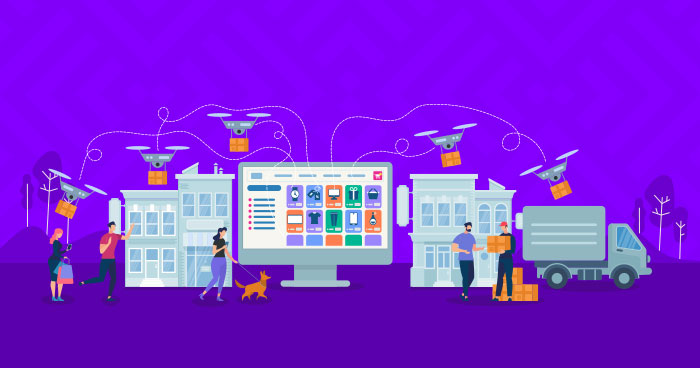
[UPDATED] Ecommerce isn’t a new trend anymore. However, there are many who are not aware of ecommerce’s full potential. In this article, we have covered all important questions about ecommerce. From the definition of ecommerce to the very common “what is ecommerce?”, this blog is about the ecommerce business models that translate into profits in 2021.
Mục Lục
1. What is Ecommerce
Ecommerce = electronic commerce. In simple terms, it means running an online business. It refers to the selling and purchasing of goods and services over the internet where the exchange of money and data takes place via protected connections in order to execute a transaction.
History of Ecommerce
The history of ecommerce goes back to the early 1990s. The ecommerce phenomenon kicked off in 1991 when the online world became more recognizable. It took some time but was open for commercial use sooner than expected. Since then, many businesses took up their residence over the World Wide Web.
As soon as the common men became familiar with the internet by 1994, ecommerce become popular. Security protocols like DSL and HTTPS nearly took around four years to effectively develop in order to allow a quick, persistent connection to the Internet.

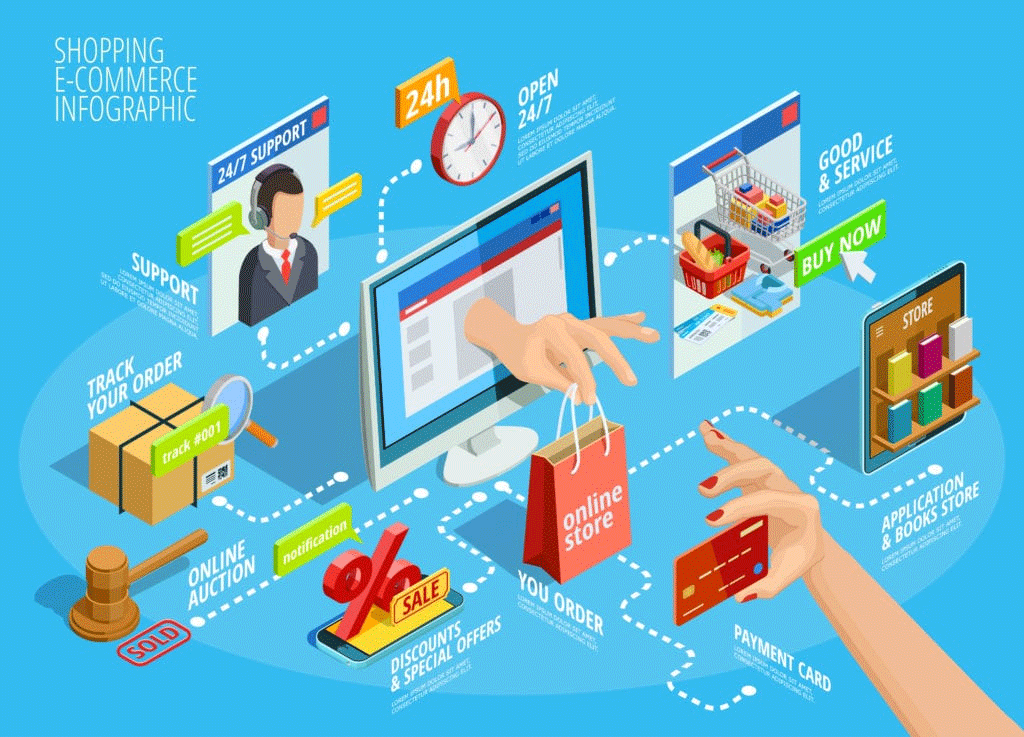
During the year 2000, many businesses from the USA and Western Europe went online to sell their products and services. This was the time when the meaning of “ecommerce” changed. Many retailers saw the benefits of ecommerce and began to optimize their websites in order to expand their businesses online.
By the end of 2001, Business-to-Business (B2B) model became the most effective domain of ecommerce as it made roughly $700 billion in revenue. Since then, ecommerce has seen an unprecedented growth as online sales continued to rise.
If we speak about the growth of ecommerce in the last decade, according to Google Trends, it has remained steady with nominal fluctuations since 2008 until 2015/2016. However, the trend of ecommerce began to grow with a promising incline since 2016/2017 and since then, more and more businesses began to create their online presence in order to grow in today’s digital landscape.
Today, ecommerce, for people, is a process of purchasing goods and services over the Internet by using an electronic payment service through protected connections. The best-selling products are emerging from categories like music, books, computers, office supplies, and consumer electronics.
Importance of Ecommerce in Today’s World
Ecommerce offers a number of benefits over “brick and mortar” stores. It allows customers to easily find their desired product(s) through a large database. They can research the product beforehand, compare prices, learn more from customer reviews, and then buy it once their concerns are rectified by the online customer support representative.
Online retailers on the other hand, also get to enjoy many ecommerce benefits. The internet or more accurately, search engines allow online businesses to reach global markets. They can be found by potential customers without spending hundreds of dollars on expensive advertising campaigns. The internet has allowed them to track customer preferences and then execute perfectly tailored marketing campaigns.
2. Ecommerce or E-commerce?
The correct way to write this term is to add a hyphen: e-commerce While search engines don’t really pay much attention to hyphens and other symbols, it is preferable that you use the original term, which is “e-commerce” when writing or searching.
Hence, for instance, if the user searches for either “e-commerce business models” or “ecommerce business models”, the search engine understands the intent behind the search and shows almost similar results for both the searches.
Nonetheless, if you’re keyword-conscious, then yes, “e-commerce” wins. According to KWFinder, people search “e-commerce” more than “ecommerce”. Take a look at the average monthly search volume of both keywords in the illustration below.


To sum this ecommerce or e-commerce, in my opinion, ecommerce is oftenly hyphenated in the online world. However, when it comes to choosing between “e-commerce” and “ecommerce”, I prefer to choose the former. But even if you search with the hyphen, you will get to see similar results on SERPs.
3. Ecommerce Classification
There are four primary types of ecommerce business models. All of them are classified based on the nature of the transactions. The classification of ecommerce businesses are as follows:
Business-to-Business (B2B) Ecommerce

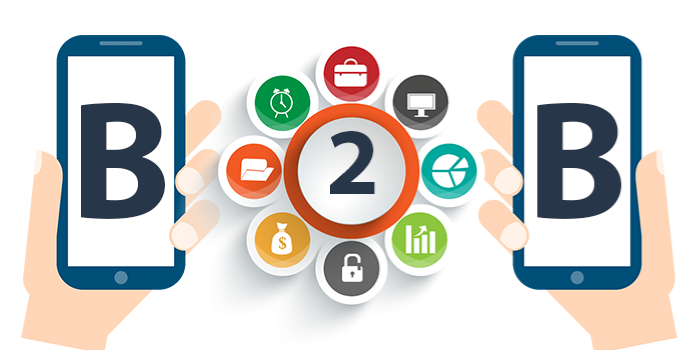
The B2B ecommerce model refers to trading goods or services from one business to the other. The B2B model promotes online businesses to interchange goods with each other. For instance, a manufacturer sells his goods to a wholesaler who then sells it to the retailer. In this scenario, the manufacturer and the wholesaler are following the B2B model.
Business-to-Consumer (B2C) Ecommerce
The B2C ecommerce model works as the name suggests. In the B2C ecommerce model, a business sells the goods or services directly to the individual customer online. In the aforementioned example, the retailer is following the B2C model as he is purchasing from the wholesaler in bulk, but selling the goods online to individual customers.

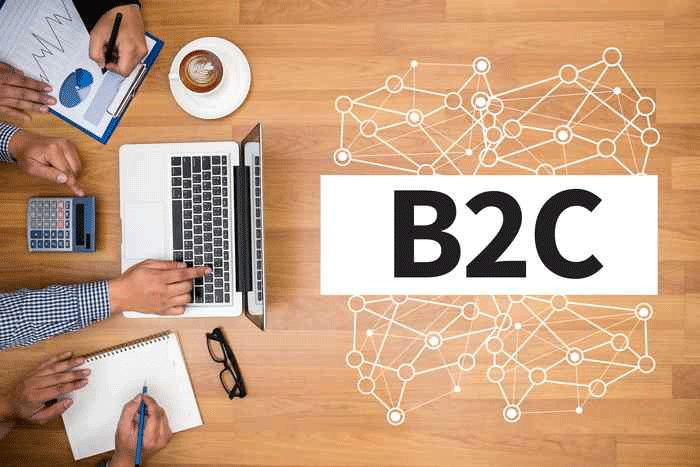
With the help of the B2C model, the customers can view and purchase the desired products from the retailer’s online store. Once the online retailer receives an order, he processes the order and then sends the goods directly to the customer. For instance, Amazon is an excellent example of B2C ecommerce model as they sell individual goods to individual customers. There are many B2C companies that have taken the market by storm, such as Expedia, Inc., IKEA, and Netflix.
Consumer-to-Consumer (C2C) Ecommerce
Another ecommerce business model is the C2C model. It allows the customer to sell the goods or services to other customers with the help of the internet. It makes perfect sense in today’s digital landscape. In simpler terms, this is mobile ecommerce!

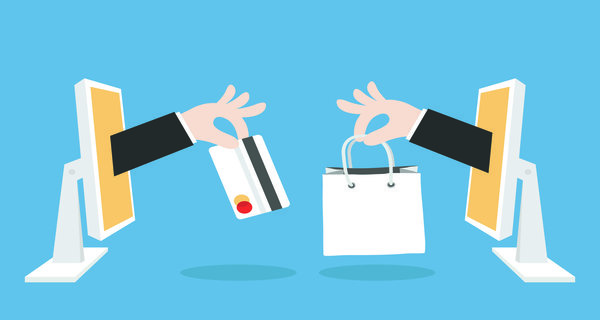
The C2C ecommerce model allows an individual to sell their assets online for e.g. a car, a house or a bike to other individuals. The seller can publish an ad containing all the product details. Interested customers can view the details of the product and contact the seller to pursue the transaction. Ebay or OLX is a great example of the C2C ecommerce model that is running successfully.
Consumer-to-Business (C2B) Ecommerce
This interesting ecommerce model allows an individual customer to sell goods and services to a business. It follows the reverse path of the B2C model where businesses create products and services for the end user.
The C2B ecommerce model allows individual customers to sell goods or services to businesses that are willing to purchase from them. For instance, if you are a software architect, then you can showcase your skills set to potential businesses on platforms like Fiverr or Upwork. If the business is enticed by your software skills then they will purchase the software from you, and might as well, hire you for future services.
Discover The World Of Ecommerce & Start Selling Today
Find your niche with our guide to top trending products to sell.
Find Now
4. Top Examples of Ecommerce
There are some pretty major examples of ecommerce businesses that have made it big, including Amazon, FlipKart, eBay, and Myntra. Here are some major examples that you might have heard of.
Amazon.com Inc
Amazon.com Inc. is one of the best examples of a thriving ecommerce business that initially began as a retailing platform, however, with the passage of time; they moved their operations online and became one of the largest ecommerce platforms in the world.
They are located in Seattle, Washington (USA) and was founded in 1994 by Jeff Bezos. It became one of the first American ecommerce business to sell goods online.
Initially, Amazon.com was considered as an online book store. However, with time, they have extended their market reach in a variety of business spheres by adding products like electronic gadgets, software, DVDs, video games, music CDs, MP3s, apparel, footwear, health products, etc.


In the year 1999, Time Magazine entitled Jeff Bezos as “Person of the Year” in recognition of Amazon.com’s success. Although their headquarter is located in the USA, Amazon established different websites in various developed countries such as the UK, Canada, France, Germany, Japan, and China. Amazon.com supports and operates retail websites for various popular organizations, including Marks & Spencer, Lacoste, the NBA, Bebe Stores, Target, etc.
Moreover, Amazon is also one of the first ecommerce websites to establish an affiliate marketing program. Nowadays, Amazon.com generates 40% of its sales from a well-established affiliate program where affiliates sell the goods on their own website.
According to the research conducted in 2008, Amazon.com attracted nearly 615 million online customers annually. Their most popular feature is their product review system that allows any customer to submit their review and rate the product on a scale from one to five stars.
Warby Parker
Warby Parker is an American online eyewear retailer that is headquartered in New York City. It was founded in 2010 by Neil Blumenthal, Andrew Hunt, David Gilboa, and Jeffrey Raider.
They primarily sell prescription glasses and sunglasses through their website, however, they also have more than 80 retail stores in the USA and Canada. The organization’s official name is JAND Inc. whereas Warby Parker is its trade name.


Their “Home-Try-On” program allows any customer to ask for five frames from their website. When they receive the eyewear, they can try them at home for five days, with no additional charges.
Toms
Toms is located in Playa Del Rey, California. It was founded in 2006 by Blake Mycoskie, an entrepreneur from Arlington, Texas. Toms design and sell shoes, eyewear, coffee, apparel, as well as handbags. Toms’ business model is also known as the “One For All” model which refers to their promise to deliver value.
- When they sell a pair of shoes, a new pair of shoes is provided to an impoverished child.
- When they sell eyewear, a part of its profit is used to save or restore eyesight for the people who are unable to see.
- With the purchase of each coffee, Toms work with their “giving partners” in order to provide 140 liters of water.
- Also, during the year 2015, Toms’ collection of bags were launched to help contribute to the advancements needed in maternal health. With the purchase of every Toms bag, training for skilled birth attendants was provided. Furthermore, they began distribution of birth kits containing items that allow women to practice safe childbirth.
Birchbox
Birchbox is an online monthly subscription service based in New York City that sends its subscribers a box of selected samples of beauty related products. These products vary from skincare items, perfumes, organic products, and numerous other cosmetics.
Birchbox was founded in September 2010 by Katia Beauchamp and Hayley Barna. Birchbox’s initial funding began with $1.4 million in seed funding from investors during October 2010. Moreover, Birchbox managed to gather $10.5 million in Series A Funding in August 2011.

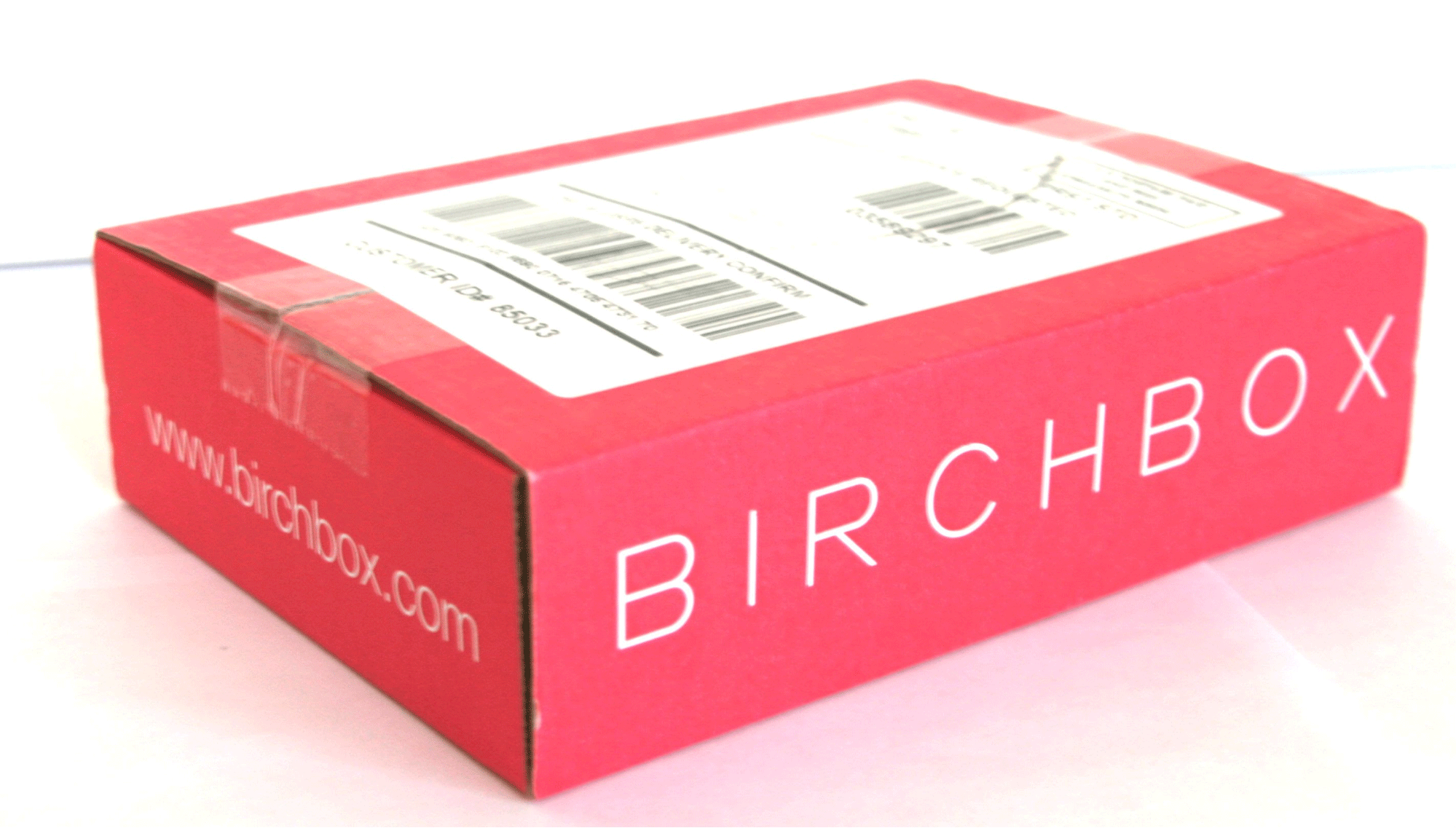
By April 2014, Birchbox had managed to generate $60 million in Series B funding. In July 2014, Birchbox opened its first brick-and-mortar store in New York City. They were valued at $485 million by the end of 2014.
In October 2014, Birchbox collaborated with Soldsie in order to launch its first Instagram shop. It allowed interested Instagram users to buy directly via Instagram simply by leaving a comment on the photo of the product they liked with the hashtag #birchboxcart.
By September 2015, Birchbox had more than a million subscribers catered by 300+ employees. As of May 2018, it has raised a total of almost $90 million in funding.
Dollar Shave Club
The Dollar Shave Club is an American company located in Venice, California. It basically delivers grooming products like razors to customers by mail on a monthly basis.
The company was founded by Mark Levine and Michael Dubin who met at a party and exchanged their frustrations with the cost of razor blades. After a while, they put in some money from their own pocket as well as garnered an initial investment from Science Inc. The Dollar Shave Club began its operations in January 2011 and went live with their website in April 2011.


During March 2012, seed investors offered the Dollar Shave Club a funding of one million dollars from groups like Kleiner Perkins Caufield & Byers, Andreessen Horowitz, Shasta Ventures, and a few more. Moreover, Venrock, provided a Series A funding of $9.8 million in October 2012. The next year, a series B funding of $12 million was raised by Venrock, Comcast Ventures, New World Investors and Battery Ventures.
Amidst the fundraising announcement, Dollar Shave Club announced that it would be expanding its product line to include additional products for men in 2014. In June 2015, they secured $75 million in series D funding. Later on, in July 2016, the Dollar Shave Club was acquired by Unilever for a reported $1 billion in cash.
5. Types of Ecommerce Businesses
Dropshipping
Dropshipping is one of the most successful ecommerce business models. Before you ponder how to start a dropshipping store in 2021, you will certainly be happy to know that with dropshipping, you never have to stock merchandise.

The dropshipping business model allows you to purchase a product once you have already made a sale and have been paid by the customer. Once you get paid, you can purchase the product from a third-party manufacturer or a supplier and ship the product directly to the customer. With the dropshipping model, the store owner don’t have to worry about ever seeing or handling the inventory.
If you opt for the dropshipping business model, do ensure to quickly run through the best dropshipping tips for guaranteed success. There are many trending products to sell in 2021, however, the best dropshipping products will allow you to scale your ecommerce business effectively.
Build your own dropshipping store effortlessly using WooCommerce
The most cost-effective option to start your own website and begin selling today.
Step-by-step Guide
There are various benefits that come along with the dropshipping business model and attracts both beginners, as well as, established entrepreneurs. However, this model isn’t all roses and rainbows as its convenience and flexibility comes at a price.
Wholesaling and Warehousing
An interesting business model that allows you to purchase products in bulk and stock the inventory is warehousing. The wholesaling business model gets you better prices simply because you’re buying the product in a bulk and not making a one-off purchase.

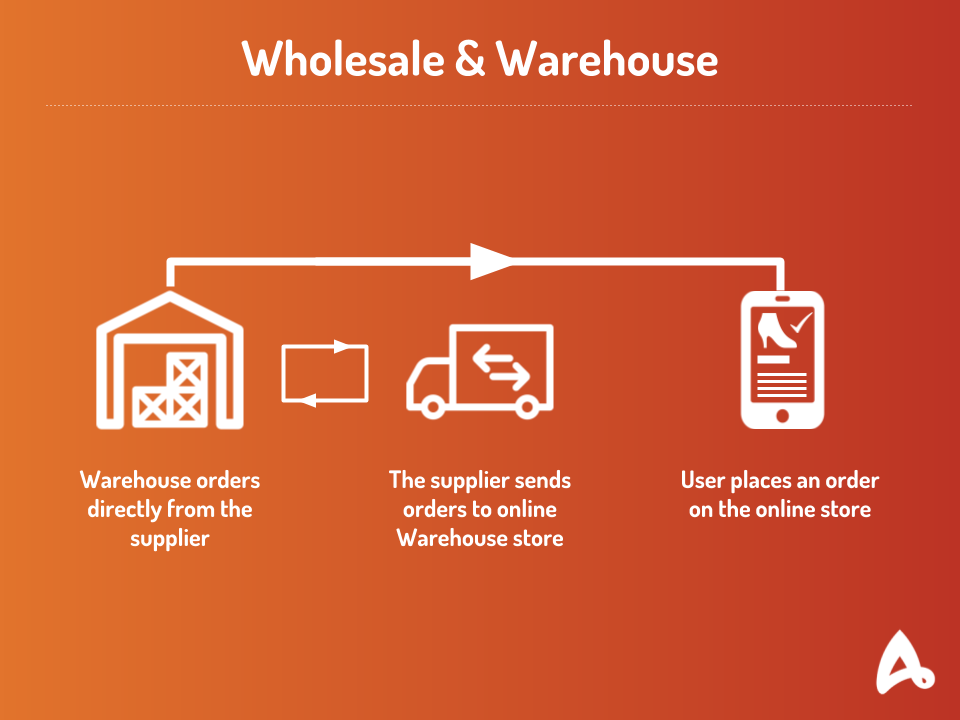
This B2B model allows the business to sell goods in a large volume. The wholesaler sells the goods to the retailer, who then sells it for a profit. You can also sell the goods individually on your website in order to enjoy a better profit margin.
On the down side, most wholesale businesses need to generate enough sales volume in order to make up for the smaller profit margins. The wholesaling model also requires high upfront investments for both purchasing and stocking of the goods.
Manufacturing and White Labeling
The manufacturing business model has stood its ground since decades. This B2B model gets paid to create the goods.
As far as white labeling is concerned, you aren’t technically developing the product yourself. Instead, you’re licensing it which allows you to put your brand’s name on it as if you’re the owner and creator of that product.

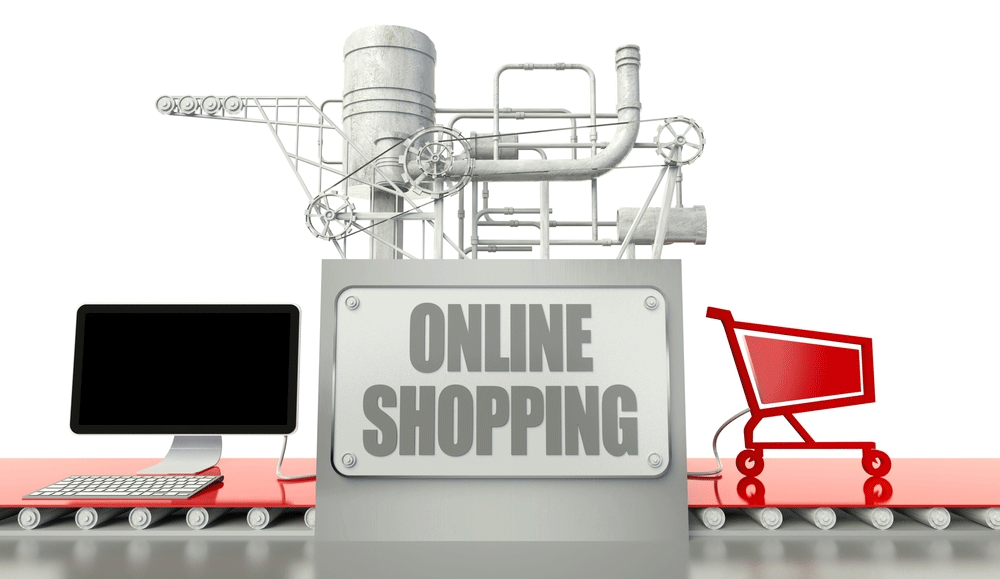
Either way, this business model allows you to remain on top of the product chain at all times. You are able to control the entire product cycle, and are always aware of what’s going on with the product.
As wholesalers purchase goods from manufacturers in bulk, you can also dropship your goods or white label drop-shippers to sell your products for you.
If you’re commitment-phobic, this business model is not for you. With all honesty, there’s no easy way to terminate a manufacturing contract. The manufacturing business model also demands a process to monitor and maintain quality control. It also incurs a large investment upfront, so you must have a solid financial plan.
Subscription Ecommerce
According to the study by Hitwise Retail from 2016, subscription box businesses grew almost 3,000% from 2013 to 2016. That represents a tremendous opportunity this business model offers to both ecommerce business owners and brick-and-mortar retailers.
Unlike a traditional ecommerce business where one-time transactions take place, the subscription business model allows the customer to subscribe to a plan in order to receive regular deliveries of the subscription box.

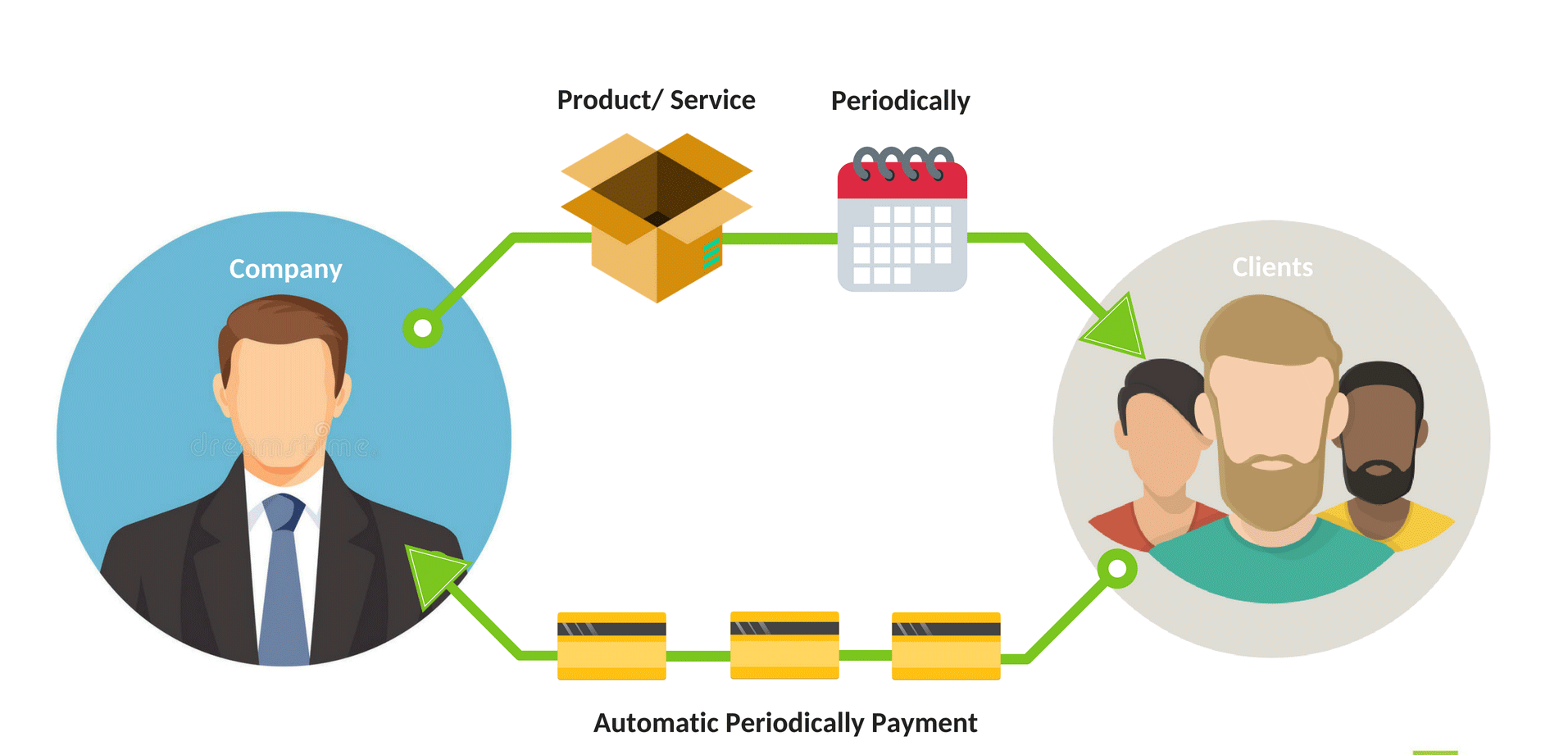
The subscription-based business model offers two value propositions. One, savings and two, convenience for customers. They just need to order once and then the products are delivered to them at timely intervals, usually once a month.
This business model allows the customers to enjoy discounts for subscriptions. Many a times, the more plans they subscribe to, the more savings they can enjoy.
6. Top Ecommerce Platforms
There are a number of ecommerce platforms you can choose from. However, it is significant for you to understand the short-term and the long-term impact on the future of your ecommerce business. To help you decide, following are the top 5 ecommerce platforms along with their market share so that you can decide which platform suits your business best.
A survey conducted by BuiltWith covering 1 million ecommerce websites identified the best ecommerce platforms from 2018. Take a look at the illustration below.

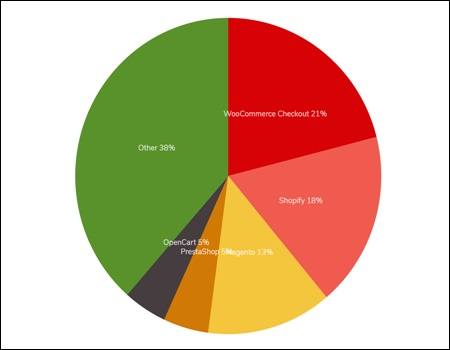
Talking about the largest ecommerce market share, WooCommerce leads the chart with nearly 24,000+ websites out of one million. Shopify has the 2nd largest market share with nearly 20,000+ websites. Magento secures the 3rd place among the top ecommerce platforms with 15,000+ websites. PrestaShop and OpenCart have been trending recently, and they managed to secure a spot among the top five ecommerce platforms with a market share of five percent each.
WooCommerce
It is a standalone software that needs to be installed on a web server. It’s a part of your existing WordPress website, and it’s deeply integrated with it. It offers a variety of features such as product management, order management, multiple payment gateways, customer management via third-party plugins alongside thousands of WooCommerce themes both free and paid. Moreover, it is a mobile-friendly platform up to the extent made available by the theme. You can also get your hands on reports based on sales and store activity. Furthermore, you can easily offer discounts and coupon codes and enjoy thousands of extensions.
Shopify
Unlike WooCommerce, Shopify is a subscription-based service. It offers a subdomain and a hosting space for your ecommerce store and you can also hook up your own domain name as well. Its variety of features include product management, order management, multiple payment gateways, basic customer management, unlimited bandwidth, 100+ professional themes and thousands of Shopify apps. It is a mobile-friendly platform which also allows you to edit HTML and CSS directly. You can also get your hands on reports based on sales and store activity. Additionally, you can easily offer discounts, gift cards, and coupon codes with the help of Shopify.
Magento
Magento is a also a subscription-based mobile-friendly service that provides a subdomain alongside a hosting space for your ecommerce store where you can also hook up your own domain name. Its features include product management, order management, multiple payment gateways, basic customer management, 100+ professional themes, and unlimited bandwidth. It allows you to easily offer discounts and coupon codes on your store. You can sell your products in person with Square, as well as on marketplaces and social platforms. Furthermore, it offers great analytics module, with reports, purchase funnels, abandoned carts stats, and much more.
PrestaShop
PrestaShop is a freemium, open source ecommerce platform that offers more than three hundred built-in features for managing products, payments, shipping, manufacturers and vendors. It uses a web template system that allows its users to modify their store themes and add new features via add-on modules. The PrestaShop Addons marketplace is a platform for third-party developers where they can sell their themes and modules to other merchants.
OpenCart
OpenCart is a PHP based open source online store management system that uses a MySQL database and HTML components. You can customize the platform however you may please to ensure a smoothly running online store. This complete ecommerce solution allows you to launch your online store and add or manage the products listings with ease. It offers all the standard online store functionality you need such as support in different languages or currencies. You can also integrate numerous themes to give your website a distinctive look.
7. How to Start Ecommerce Business in 2021
Starting an ecommerce store is no rocket science. You just have to ensure that you’re off on the right track. To begin with, differentiate the pros and cons of a niche-specific store vs a general store for a better understanding at what you want to do.
i. Research and Prepare
With all honesty, you’re a fool if you start your ecommerce business without appropriate research and preparation. It’s worth spending the time to prepare before you launch.
ii. Prepare a Business Plan
When you are developing your ecommerce business plan, your target audience is yourself!
A business plan will assist you to pen down your ideas on a paper. Take your time to write everything down. It might seem like a lot of work however, it will save you a lot of time and money in the long haul. It will prepare you for the challenges and opportunities that you’ll face as a startup. Here’s what you should get out of your ecommerce business plan.
- Knowledge – A better sense of what do you know, but more importantly, what you don’t know.
- Resources – This should cover resources like capital, partners or the team you’ll need to ensure your ecommerce business is successful.
- A Road-map – Set clear business goals.
Also, there are three objectives you need to derive out of your business plan. They are:
- What are you selling? – Physical products, digital products or services.
- Who are you selling to? – Are you a B2B or a B2C business model or a marketplace acting as a middleman?
- How are you sourcing your product? – Are you manufacturing in-house? Are you sourcing it from a third-party manufacturer? Are you wholesaling or dropshipping?
One more thing, use the financial section of your business plan to forecast sales, expenses and net income. Maintain an excel sheet on a monthly basis that identifies your:
- Revenue
- Fixed Expenses
- Variable Expenses
iii.Research Competition
Many entrepreneurs miss out on researching their competitors. Some say they lack time whereas some say that their competition strategies do not matter to them. Regardless, it is a good practice to keep an eye out on your competitors. It will allow you to:
- Identify customer pain points
- Come up with new products
- Analyze promotional strategies
- Pricing opportunities
- New ideas
- New keywords
You can begin by researching on Google. Put yourself in the mindset of your customer. Pick a product and run a search based on the keywords you think your potential customers will be using. Also, make sure you run the search in an incognito window just so Google does not alter results based on your search history.


Track the results on a spreadsheet. Make it a baseline analysis and run it every fortnight or on a monthly basis. You will be surprised to see changes that take place in your competitive space.
Browsing search engines only won’t cut you all the slack. You also need to visit and thoroughly go-through your competitors’ websites. Take a look at their landing pages, their product categories, their product descriptions, what keywords they are using to rank etc.
Note down all the key findings of your experience. Make sure you do your research as a consumer and not a competitor.
iv. Finding the Right Vendors
There are plenty of factors and elements that ensure the success of an ecommerce business. One amongst them is to find the right vendors for your business.
You can always work with the local vendors as that reduces both the shipping time and the costs. It will allow you to physically test the product and control quality of goods being shipped. The cherry on top, you will also be playing a vital role to boost your country’s economy.

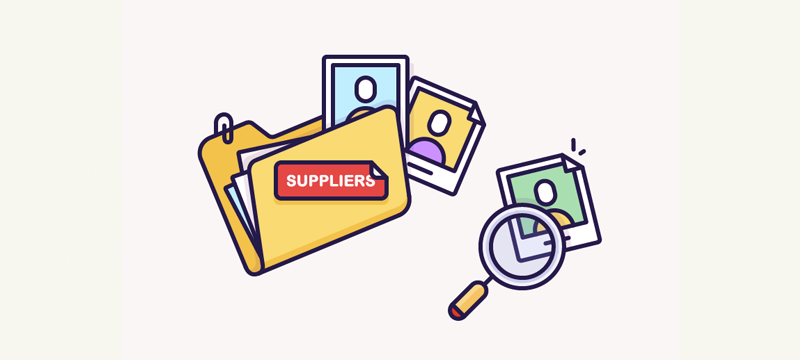
Additionally, if you’re a middleman or a dropshipper, and you intend to offer a unique variety of products to your customers, you can outsource the products from different countries. The downfall here is that you won’t be able to control the quality of products as you cannot physically test the product(s) due to geographical restrictions. However, on the bright side, you won’t have to worry about managing inventory as the vendor directly ships the goods to your customers.
Following are the few factors that you need to check in order to find the right vendors for your business.
- Experience, Expertise & Trustworthiness
- Quality Practices
- Size & Scalability
- Customer Reviews & Testimonials
- Sample Projects
- Transparent Pricing
- Management Processes
v. Setting up an Ecommerce Store
With the right knowledge and resources, you can scale your online store in any niche effectively. To help you start an ecommerce store, we have prepared a guide for you that enlightens everything there is you need to know on how to start an ecommerce business.
If you need further assistance with the technical aspects of setting up an ecommerce store, consider working with an eCommerce development company. You can leverage their experience and expertise to guide you through the entire process and help you build a custom online store that meets your specific needs.
But before we proceed further, here is a list of the essentials you need to take care of.
- Name & Logo
- Securing Domain & Hosting
- Registration and licensing
- Building your store
- Selecting Sales Channels
- Launching your online store
Ecommerce Hosting – Fast Ecommerce Web Hosting for Online Stores
8. Post Launch Essentials
Setting up your ecommerce store is still comparatively easier than scaling your online business after its launch. There are a few factors you need to understand in order to scale up. These factors include:
i. Importance of SEO
It is significant for entrepreneurs to understand ecommerce SEO strategies. A solid ecommerce SEO strategy will allow your online business to rank higher on SERPs and garner organic traffic with ease.
Moreover, you need to understand that people today are more tech-savvy than ever, and they prefer shopping from their mobile phones. It is important to ensure your ecommerce SEO strategies are mobile-friendly as well.
SEO for ecommerce is something where many entrepreneurs fail because they are unable to fully exploit the power of organic marketing.

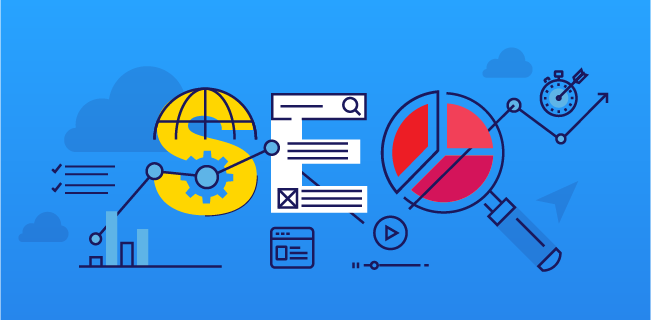
To ensure you don’t repeat the same mistakes, we have developed a detailed guide on ecommerce SEO so that you can scale your online business effectively.
Once you’re done going through the ecommerce SEO guide, also take a look at this ecommerce SEO checklist in order to ensure maximum effectiveness of your ecommerce SEO strategy.
ii. Marketing Your Products
Amazing things will happen when you actually listen to your customers instead of enforcing your version of the perfect product. Marketing your products without customer data is like driving a car with your eyes shut. Your marketing strategies should be simple, memorable, inviting to look at and fun to read. Do remember, a good marketing strategy will make your brand look smart but a great marketing strategy like Luxury PR makes the customer feel smart. When that happens, you get sales!
Without further ado, let’s dig deeper into how to come up with an effective marketing strategy for your ecommerce business.
iii. Content Marketing
I’m sure you must’ve heard of the fact that Content is King! Unless you live under a rock, you must be aware of what ecommerce content marketing is all about.
According to Content Marketing Institute, “Content marketing is a strategic marketing approach focused on creating and distributing valuable, relevant, and consistent content to attract and retain a clearly defined audience — and, ultimately, to drive profitable customer action.”

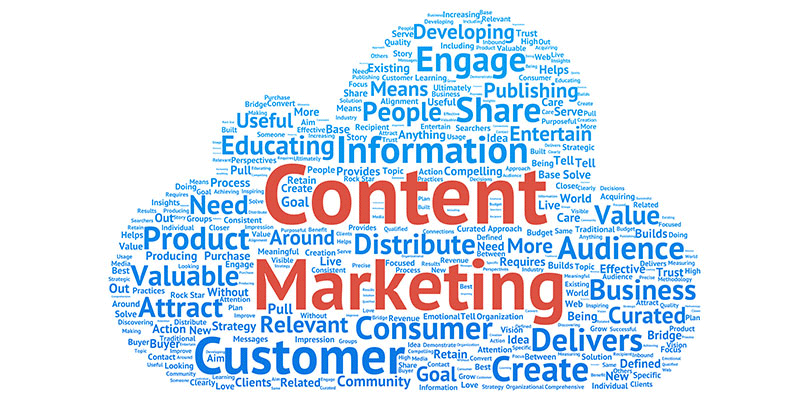
There are various content marketing strategies that will allow you to boost organic traffic, improve conversions, and most importantly, increase sales. Feel free to produce content in any format as long as you are helping your customers. Your content gives you the chance to make your customers understand how your product can resolve their pain points and make their lives easier.
With that being said, take a look at the best ecommerce content marketing practices in order to give your customers what they need.
iv. Email Marketing
According to a research study, email marketing offers an ROI that is four times greater than any other medium. This makes it a highly efficient practice to derive more sales and profits. To keep things simple, we have curated a list of ecommerce email marketing tips that will allow you to ensure that your marketing game is nothing but strong.
v. Driving Traffic
They say in this day and age, it’s easier than ever to start an ecommerce business. With the help of the internet, you can reach millions around the globe right from day one.
But truth be told, that rarely ever happens. The internet is a competitive place. It’s becoming difficult for entrepreneurs to stand out, especially the newbies who are just starting afresh.
To generate and maintain a steady traffic on your ecommerce website is not a piece of cake. Therefore, we have curated a list of ways to increase your website’s traffic effectively.
vi. Optimizing for Higher Conversions
Internet users don’t read website pages word by word. They skim and scan them in order to find what they’re looking for.
You must optimize your ecommerce store for higher conversions. You need to putt the most important things first so that you can hold your visitors’ attention for longer which ultimately increases your chances of conversion.
It’s a tough world out there but you are not alone. Only 22% of businesses are satisfied with their conversion rate. Now, what can you do to boost your conversion rate and take your sales off the roof?
There are a few tried and tested optimization techniques that allow you to enjoy higher conversions. Take a look at these ecommerce conversion rate optimization techniques and allow your business to stand out from the crowd by growing immensely.
vii. Using Analytics to Gain Deeper Insights
The more data you have, the more competitive advantage you can enjoy. The expectations of customers are high and competition is never fading. Entrepreneurs are under constant pressure to increase business efficiency and gain desired results.
By using analytical tools, you can not only gain deeper insights about business but also your customers. This data provides entrepreneurs with a competitive advantage by allowing them to see where they stand, what improvements are needed, whether the trends in sales have increased or decreased, and what are potential gaps in the market that can be capitalized.
According to Robert Hetu, research director at Gartner, “Advanced analytics tools enable deeper insights and discovery that will challenge business assumptions. They also put information in the hands of business analysts and business users and offer significant potential to create business value and competitive advantage.”
On the other hand, data has become a lot more accessible. Gone are the days when only data scientists or analysts were able to comprehend it. Now, it can be used by anyone to increase productivity and improve decision-making.
viii. Scaling Your Store with KPIs
Keeping a track of performance is an important challenge for all ecommerce entrepreneurs. It’s not simply a matter of measuring few key parameters, instead, you need to make sure that your ecommerce business is moving forward in the right direction. Tracking performance on different social platforms is important to know what works and what doesn’t.
Following is an infographic for your convenience so that you can quickly go through the important ecommerce KPIs every ecommerce entrepreneur should measure timely.


9. Future of Ecommerce
The Harvard Business Review says, “No industry is failing faster than the traditional retail.” The ecommerce industry will continue to grow as brick-and-mortar retail stores are establishing their online presence to increase revenue and grab larger profits.
The rising trend of ecommerce is surely going to have an impact on consumer demand and will impact global sales. It’s only going to go upwards from here!
People are frustrated of finding a parking spot and dealing with queues. The convenience of purchasing products online with just a few clicks from your comfort zone has become a trend that is not going to fade away anytime soon. The ecommerce industry represented only 13% of the retail sales in 2017 which means that there is plenty of room for it to climb up the ladder.
Share your opinion in the comment section.
COMMENT NOW
Share This Article
Reza Merchant
Reza Merchant is a Foodie by passion and a Digital Marketer by profession. He enjoys creating digital content for various platforms and aspires to be the change he wants to see in this world.
Get Connected on:
Community Forum















![Toni Kroos là ai? [ sự thật về tiểu sử đầy đủ Toni Kroos ]](https://evbn.org/wp-content/uploads/New-Project-6635-1671934592.jpg)


